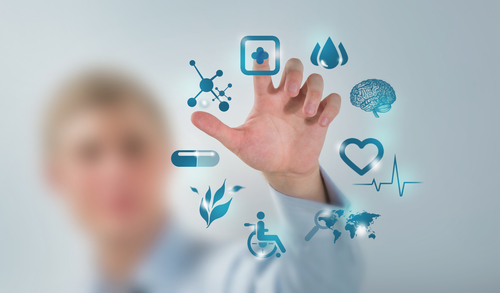Dec 15, 2015
Future Trends in Healthcare
As medical technology advances, healthcare will become more accessible for patients. As the technology becomes more readily available, patients will become more informed and empowered in monitoring and treating their own health.
Renowned healthcare speaker Robin Farmanfarmaian predicts the growth of fast-moving sensor industry. In fact, the wearable tech and sensor market is expected to be a $50B-a-year industry by 2019.
Platforms to manage all that tracked information are gaining popularity. One example is Qualcomm Life’s 2net platform, a cloud-based system that captures, transmits, and aggregates biometric data from medical devices and sensors. It gives healthcare providers, caregivers, and patients access. When sensors from someone with heart failure, for instance, show a jump in blood pressure, the system triggers an alert for a healthcare provider to check on the patient.
We’ll soon be able to monitor pretty much every body activity continuously, effortlessly, and passively, through wearable, pills, clothing, and even built into our environments like inside toilets.
Another renowned futurist, Glen Hiemstra, suggests that not only will we be able to more accurately monitor biologic systems, but research will allow us to more accurately diagnose and treat medical ailments, slow the process of aging, and even control the human brain.
Understanding the interactions of both biological systems and various drugs is leading to more precise treatments with fewer unintended consequences. Much of this can be attributed to global teamwork: more private and university labs than ever are both conducting research and, importantly, sharing their results with other labs collaboratively and in near real time, leading to faster progress.
If that isn’t enough to celebrate – he predicts that scientists will be able to slow the process of aging by infusing patients with young blood. Experiments with animals are showing that simple blood transfusions of younger blood can lead to dramatic down-aging and disease improvement.
As for our smartest organ, Hiemstra notes that the first full models of intact brains, in this case mouse brains at the Paul Allen Institute, are paving the way to using computing power to model all the neurons and all the connections between them in a brain for the first time. He predicts that diagnosing and treating neurologic disorders will be facilitated by DNA analytics.
Technology futurist, Vivek Wadhwa, takes this idea one step further, predicting we will even surpass DNA reading, and start applying DNA writing to enhance our biological features. For example, the military can use genomics to create exoskeletons for soldiers capable of carrying up to 900 pounds of equipment. With thithat genomic medicine will turn ideas such as creating customized 3-D printed organs into a reality.
The common theme surrounding all this technology is that it will enable physicians to do more of what they’re better at: treating patients. They’ll be able to help patients manage their health better, catch things earlier when they are more easily treated, and more effectively cure ailments we would have never dreamed possible.
The content writers at BigSpeak Speakers Bureau are Experts on the Experts. They hold doctoral, masters, and bachelors’ degrees in business, writing, literature, and education. Their business thought pieces are published regularly in leading business publications. Working in close association with the top business, entrepreneur, and motivational speakers, BigSpeak content writers are at the forefront of industry trends and research.
Tags
